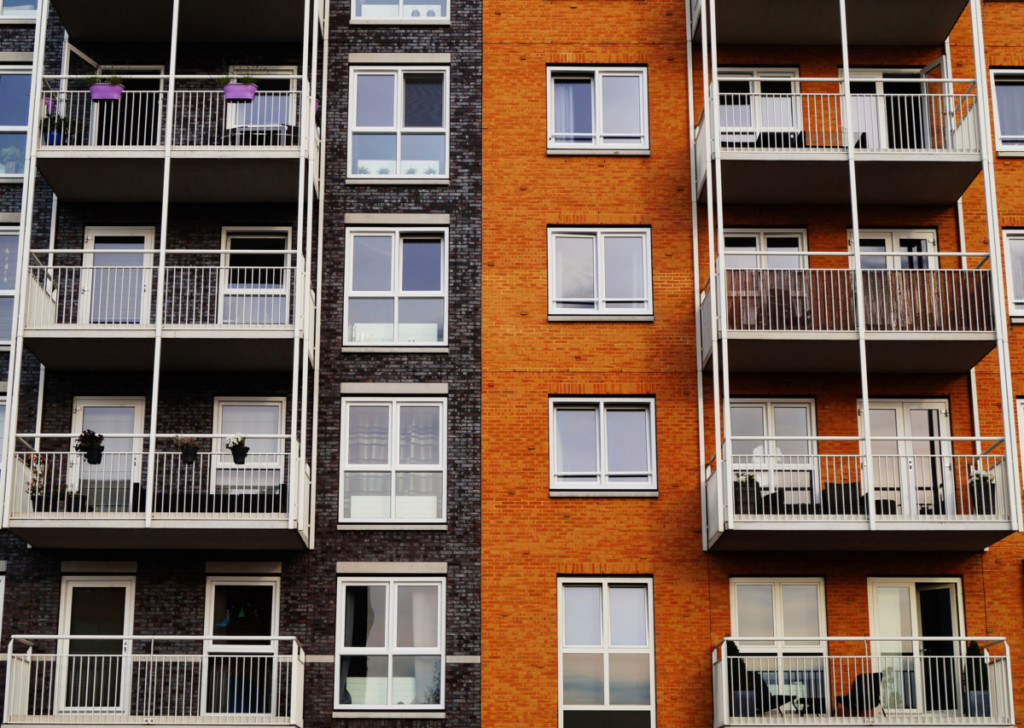How to Rent an Apartment in 2025: Follow These 10 Steps


Knowing how to rent an apartment can feel overwhelming, especially for first-time renters. To secure your ideal apartment, it’s essential to understand the steps involved, from budgeting to moving in. This guide provides a clear, step-by-step approach to navigate the apartment rental process efficiently, ensuring you find a place that meets your needs and budget. Whether you’re transitioning from an apartment in Austin, or moving into a new rental in Boston, this guide will help you navigate the process with confidence.

What renters can expect in 2025
As we head into 2025, renters could see some positive changes in the rental market. Redfin’s 2025 market predictions suggest that home prices are expected to rise, making homeownership harder to reach for many. However, the rental market should be more stable. Median rent prices are expected to hold steady throughout the year, and with projected wage increases, renting could become more affordable.
On top of that, a wave of new rental construction — a leftover effect of the pandemic apartment-building surge — could lead to more available units. This increase in supply might encourage landlords to offer better leasing terms, like free parking or a free month’s rent. For renters, this means more choices, better deals, and potentially more negotiating power.
With stable prices and more options on the horizon, 2025 could be shaping up to favor renters. Staying on top of these trends will help you make informed decisions as the housing market continues to evolve.
Step 1: Determine your budget
As you’re learning how to rent an apartment for the first time, the first thing to look at is your rental budget. Paying rent month to month is not the only cost involved. It’s common for first-time apartment renters to overestimate how much rent they can afford. The U.S. Department of Housing and Urban Development (HUD) recommends that your rent not exceed 30% of your gross income.
The 30% rule is a general guideline, but in high-cost cities like Los Angeles, San Francisco, or New York, this may not be realistic. Renters in these areas may need to budget beyond that percentage or consider options like sharing a rental with roommates.
It’s important to factor in other monthly expenses too, such as utilities, internet, and renters insurance, to get a clearer picture of what you can truly afford.
To find out how much you can afford, consider the following:
- Location: Narrow down your neighborhood search. If your lifestyle revolves around restaurants, museums, theaters, or other local attractions, look for neighborhoods close to such amenities. If you rent in a suburb and commute some distance to work, you may actually pay more for parking and fuel than you would if you chose to live closer to work.
- Transportation: If you have a car, will you need to pay for a parking space? Can you walk, bike, or ride public transit to work and do errands?
- Utilities/groceries: Utility costs can vary seasonally, so you’ll want to estimate an average over all seasons. Renters often pay separately for electricity, gas, internet, and cable. A general rule is to plan for $200 per month in utilities, or 7% of your annual income. Groceries cost between $200–$250 a month per person.
- Lifestyle: Plan for extras like dinner with friends, movies, art museums, or other entertainment. Without a plan, these costs, incurred regularly, can unexpectedly eat into your budget.
- Emergency expenses: At some point, you may need to pay for a medical expense, new tires, or an unexpected trip. A reasonable estimate is to add 10%–15% to your overall expense. For example, if you currently spend $1,000 per month on all of your bills, add $150 to cover emergencies.
Follow these steps to determine what your overall budget looks like now:
- Write down your net income, which is the amount you bring home from your monthly paycheck. Net income is after any payroll deductions and taxes.
- Subtract your monthly income and recurring bills such as car payments, student loans, credit cards, or gym memberships.
- Estimate and subtract your transportation, utility, grocery, lifestyle, and emergency expenses.
- With the amount left over, you’ll know how much you can spend on rent. If you’re having trouble finding an apartment in that price range, take a realistic look at where you can cut expenses.
A quicker way to calculate your rental budget is to use an online rent calculator.

Step 2: Gather key documents
Landlords and property management companies require potential tenants to provide specific information and complete an apartment application to rent an apartment. This information may include your credit report with your credit history and credit score, rental history, proof of income (W-2, pay stubs, or tax returns if you work a cash or contract job), past landlord and personal references, and your social security number.
These are the most commonly requested documents for renting an apartment:
- Paystubs, W2s, tax returns, or income statements
- Bank statements
- Employment history or letter of intent to employ
- Credit report
- Photo ID (driver’s license, passport, social security card, state-issued ID)
- Rental history
- Proof of vehicle insurance and registration
Step 3: Understand your credit score
A large part of the landlord or property management’s screening process is determining if you will pay your rent on time. To do this, they will ask for your credit report with a credit score. A credit score is a three-digit number used to determine your credit risk, typically between 300 and 850. Your credit score is based on the information in your credit report, including:
- The amount of debt you have
- Your payment history
- The length of your credit history
A higher score means you have demonstrated responsible credit behavior. Here are typical ranges for credit scores and assigned ratings:
- 300-579: Poor
- 580-669: Fair
- 670-739: Good
- 740-799: Very good
- 800-850: Excellent
Why is your credit score important?
Landlords and property managers consider potential tenants with higher credit scores as likely to be more responsible with their rent payments and move them to the top of an applicant pile.
How to rent an apartment if you have poor credit or no credit history
If you have not had the opportunity to establish a credit history or you’re trying to rent with bad credit, you may need to find a guarantor or cosigner.
- A guarantor is someone willing to help pay rent, rental fees, or damages you cannot pay. They will be asked to sign the lease as a guarantor.
- A cosigner is someone who signs your lease, guaranteeing that if you don’t pay your rent, they will take responsibility. They often live with you as a roommate. A cosigner must complete the apartment application process and all background and credit checks. If rent is not paid by either the renter or apartment cosigner, any past due payments will negatively affect both parties’ credit scores.

Step 4: Decide if you need roommates
Once you’ve determined your budget, it’s time to consider whether you’ll need roommates to make renting more affordable. Sharing an apartment can help lower your monthly expenses by splitting rent and utility costs, which can be especially helpful in cities with higher rental prices.
Think about your lifestyle and preferences when deciding if roommates are the right choice for you. Consider factors like personal space, privacy, and how well you might get along sharing responsibilities. If you decide to go this route, be sure to choose roommates who are reliable, financially stable, and respectful of shared living spaces. Having clear expectations from the start can help create a smoother renting experiences.
Step 5: Know the best time of year to look for an apartment
Timing can make a big difference when searching for an apartment. If you’re looking for the lowest rent prices, consider apartment hunting in the winter months, especially from December to February. Demand tends to be lower during this time, which can lead to better deals and more negotiating power with landlords.
On the other hand, if you want the widest selection of available units, summer—particularly from May to August—often offers the most options. However, competition is higher during this peak season, which can drive prices up. Ultimately, the best time to rent an apartment depends on your priorities. If saving money is key, aim for the off-season. If finding the perfect location or layout matters most, summer might be your best bet.
Step 6: Create a list of must-haves for your apartment
Not every apartment allows you to rent with pets, comes with parking or storage, and includes desirable amenities. Before you start your search, write a list of your must-haves and nice-to-haves to help with your apartment search
- Parking: If you require parking, you need to know if the apartment offers assigned parking, whether garage space is included or for rent, if on-street parking is available, if it’s tandem parking, and if any fees are involved.
- Amenities: You might be enamored with a building’s pool, tennis courts, and gym. And granite countertops or hardwood flooring can also be very appealing. Slow down to understand if you “need” these apartment amenities or are they just “nice to have.” Having some amenities built into your rent may actually save you money. For example, renting an apartment with a fully equipped gym can save you from paying for a gym membership. You can economically host your friends if your apartment has private outdoor spaces with access to grills, entertainment areas, and lawn games.
- Appliances: If you cook at home, you’ll want a stove and oven that works, a refrigerator and freezer to store food, and possibly a dishwasher.
- Space and number of rooms: Consider the size of your bedroom, if you want or need an en suite bathroom, and the size of other living spaces outside your bedroom.
- Security: Depending on your location, you may want to live in a building with extra security for your apartment, so only people with key access can get inside.

Step 7: Research potential apartments
Finding the perfect place could take a few months, depending on your requirements and apartment availability. Start your search before you need to move from your current home.
An in-person tour reveals more than photos, which can be misleading. If you can’t visit, try for a virtual showing to get a sense of the unit and building. Seeing it firsthand helps you gauge the complex’s condition and whether the environment suits you.
Here’s a list to review during an apartment tour:
- Check locks on windows and doors to ensure they close properly. Condensation on the windows inside indicates they do not close properly.
- Look for spots on the walls or ceilings that could indicate a leaky roof or pipes.
- Turn on every faucet to ensure the water pressure is good and that it runs clear with no discoloration.
- Flip on every light switch and make a note of any burnt-out bulbs.
- Check if the floor slants look warped, which could signify previous or existing water damage.
- Look around for outlets to ensure there are enough, and their locations are good. Feel free to test them with a phone charger or clock.
- Sunlight can affect your overall mood, so large windows are ideal.
- Try out the appliances. If a unit doesn’t work or is outdated, ask the property manager if they’re willing to replace or fix it and get a written confirmation.
- Try your cell phone to make sure you have service in the apartment.
- Listen for noise from other apartments. If you can hear other residents, they can hear you.
- If it’s a walk-up apartment, keep in mind you’ll have to carry groceries upstairs regularly.
- To update your budget, ask about any additional fees and average monthly costs for utilities.
- Ask about amenities and parking.
- Take notes so you can remember each unit after your tour.
Other things to consider when researching apartments
- Look for problems/concerns like damage, mold, and loud noises: You want a unit that’s clean, safe, and livable. Things like mold or insect infestations can affect that livable condition. Inspect the apartments for signs of damage caused by previous tenants. You don’t want to be responsible for paying for repairs if you didn’t cause the damage, and you don’t want their damage to cause you an injury. Visit the apartment complex at different times during the day and night to determine if it is an environment in which you want to live. If the neighbors above you play loud music or have pets barking at all hours of the night and day, you may want to choose a different apartment.
- Research the location: Use Walkscore to see if you’ll need a vehicle for most activities and whether you feel comfortable in the area. Also check out what restaurants, shopping, and other services are in the area.
- Ask current tenants about their experience and look for reviews online: Ask landlords if they can refer you to a current tenant who will talk to you about their experience living in the apartment.
Step 8: Ask questions when looking for apartments
If you don’t ask, landlords and property managers may not be overly forthcoming. Here is a list of questions to ask when renting an apartment:
- How do I pay rent?
- How are late fees assessed?
- Where can I park my car?
- How far in advance do I need to give notice before moving out?
- Can I sublet my apartment?
- How can I break my lease if I need to?
- What kind of changes can I make to my apartment?
- How do you handle emergency repairs?
- Is rental insurance required?
- What is the pet policy?

Step 9: Fill out the rental application form
Most landlords and property managers charge an application fee. The fee covers your credit and background checks. Because you pay these fees upfront, apply only for apartments you are interested in. If you do not have a credit score or have poor credit, have a reference letter handy to help prove your worthiness as a prospective tenant. Such a letter can come from a work manager, colleague, previous roommates, or others who know you well.
Other things you’ll need to know and get together when applying for an apartment:
- Gather all documents needed: Having your documents in hand will speed up the application process, which will help you in a competitive market.
- Be prepared to pay your security deposit: You’ll likely have to pay your security deposit and first month’s rent in advance. The security deposit can equal one month’s rent or more in some areas. Landlords and property managers collect a security deposit to cover any damages you cause over and above normal wear and tear. These funds hold the apartment for you while your application is under review.
- Be prepared to negotiate specific lease terms: While the lease is a legal document, not every point in the lease is set in stone. You can always ask. Learn more about what you should know before signing a lease agreement.

Step 10: Prepare to move into your new apartment
Now that your application has been approved, and you’ve signed your lease agreement, it’s time to move into your new apartment. Moving can be stressful, especially for a first-time apartment renter, and planning is the key to making your move smooth and easy.
- Organize your move: Discuss the earliest move-in date with your landlord. With a date set, you can start packing. Your landlord may allow you to move in before the lease date.
- Purchase moving boxes: You can find these at your local office or home supply store, and local moving companies. Or look for free boxes on Craigslist or Facebook Marketplace, as well as ask family and friends.
- Ask your family and friends to help you pack: This is less expensive than hiring professionals but requires patience and coordination to work around everyone’s schedules.
- Hire a moving company: Be sure the movers are licensed, bonded, and insured. Companies who move locally usually charge by the hour, while long-distance movers charge by weight and distance.
- Pack your belongings carefully: Label every box to make it easier to unpack. When packing, use smaller boxes for heavier items and larger boxes for lighter items. Keep a box of essentials and important documents, including your lease, with you when you move.
- Call the utilities and internet provider: Set up accounts in your name and have them activated on moving day. You can set up most utilities online, but some areas may require an in-person visit and proof of residency, such as a signed lease.
- Change your mailing address with the USPS: You’ll also want to set up mail forwarding to your new apartment address. You can do this several weeks before you move.
- Deep clean before unpacking if possible: Ask your friends and family if they will help or if a professional cleaning company can do this for you. Always schedule a deep clean of your apartment before moving in.
- Make a move-in checklist: As a first-time apartment renter, you have endless details to remember, from towels and sheets to all of the kitchen gadgets. Here is a comprehensive moving-in checklist to get you started.
Renting an apartment in 2025 can feel overwhelming, but breaking it down step by step makes the process more manageable. By setting a clear budget, deciding if you need roommates, and timing your search right, you’ll be better prepared to find a place that fits your needs. Stay informed, stay organized, and you’ll be moving into your new home in no time.
The post How to Rent an Apartment in 2025: Follow These 10 Steps appeared first on Redfin | Real Estate Tips for Home Buying, Selling & More.






